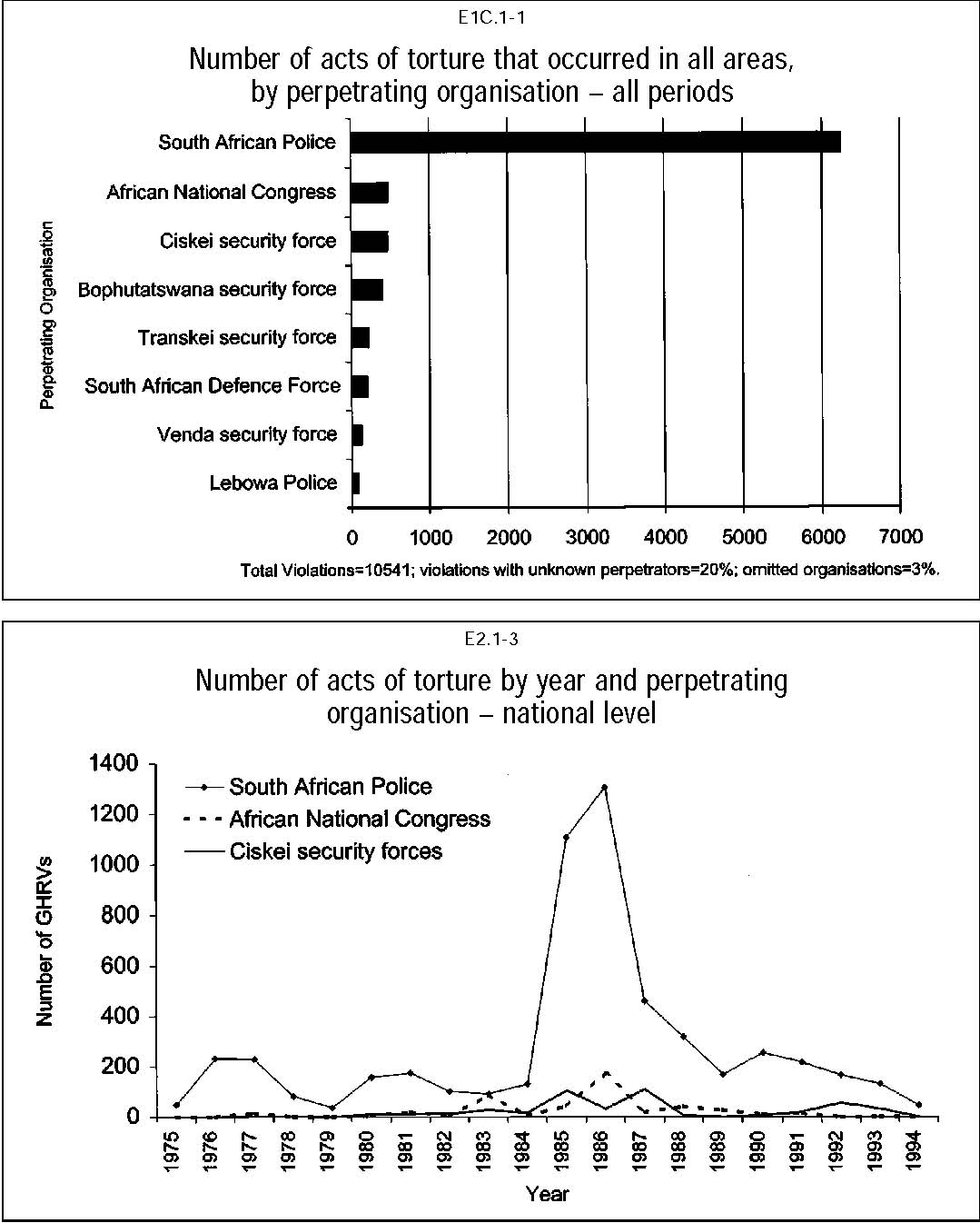 |
News | Sport | TV | Radio | Education | TV Licenses | Contact Us |
 |
News | Sport | TV | Radio | Education | TV Licenses | Contact Us |
TRC Final ReportPage Number (Original) 11 Paragraph Numbers 42 to 45 Volume 3 Chapter 1 Subsection 6 42 The pattern of torture, however, is quite different. Torture differs from severe ill treatment in two important ways – it consists of systematic abuse and it occurs in places of confinement. The victim cannot escape and nobody other than the perpetrator has access to the victim. The eight organisations who top the number of allegations of torture are:  8 The chart starts in 1975, not 1960, because fewer killings were reported from the early periods (1960 – 1975) compared to the later periods. 9 Note that the large numbers of allegations against the ANC during the 1980s were made at a time when the ANC was still banned. This is partly reflecting activities by Umkhonto weSizwe (MK), but is also due to a perceived continuity of interest between the so-called ‘comrades’, the UDF and the ANC. 8 The chart starts in 1975, not 1960, because fewer killings were reported from the early periods (1960 – 1975) compared to the later periods. 9 Note that the large numbers of allegations against the ANC during the 1980s were made at a time when the ANC was still banned. This is partly reflecting activities by Umkhonto weSizwe (MK), but is also due to a perceived continuity of interest between the so-called ‘comrades’, the UDF and the ANC. 43 Overwhelmingly it is the police who allegedly tortured. The only organisation in the top eight which is not a state-controlled body is the ANC. 44 Looking at the pattern of alleged torture by the top three organisations over time shows that it was at its worst during the states of emergency: 45 During all periods, the most instances of torture were attributed to the SAP, with steep peaks during the states of emergency, followed by a steady decline from this high during the late 1980s and early 1990s. The instances of alleged ANC torture are clustered in 1986 and then tail off. The third group allegedly involved in torture, the Ciskei security forces, show three small peaks – in 1985, 1987 and 1992. |